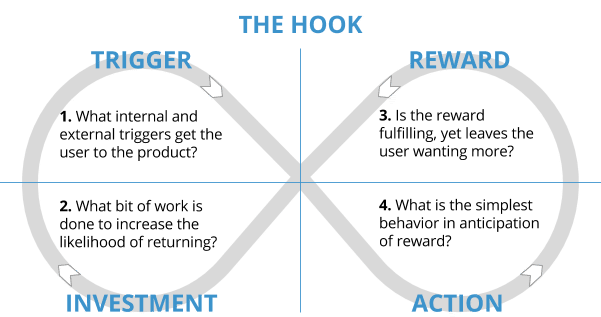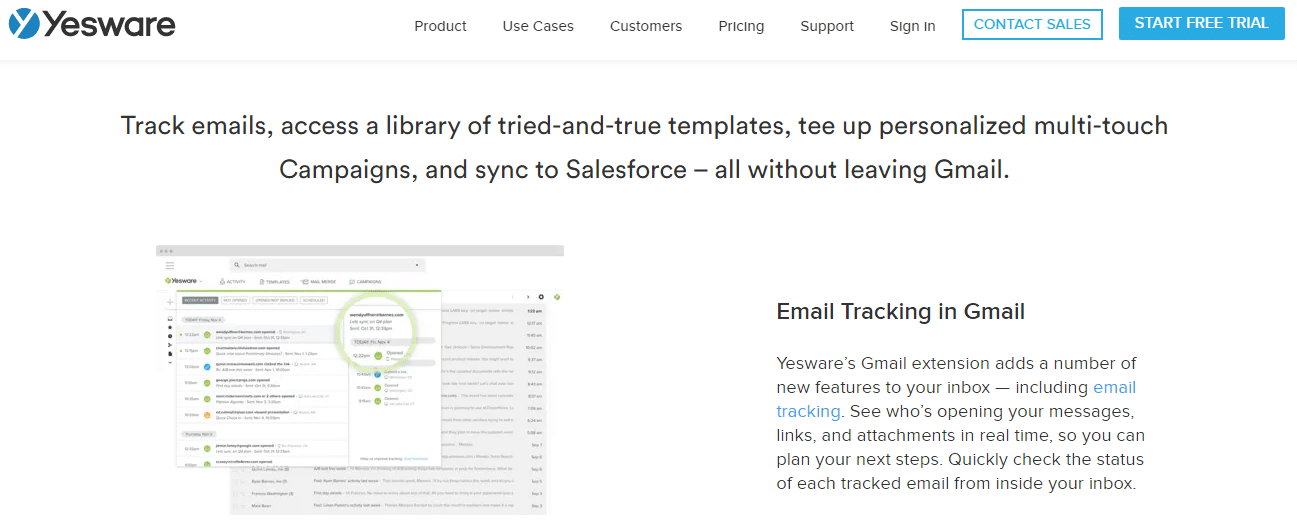Viral growth has become something of a holy grail for online businesses. Entrepreneurs lose sleep trying to come up with PR stunts, relatable TikTok videos, and other strategies just so their product can “go viral.” And can you blame them? Who can turn down the allure of a growing user base and tons of positive buzz?
This is precisely what viral growth is all about – attracting many users, free of cost, and generating word of mouth to fuel the viral loop.
Viral growth may seem like something that happens by chance, but fortunately, that’s not the case. It’s a lot more predictable than throwing social media content at the wall and hoping you achieve your viral moment, and there are reliable ways to excel at it.
Whether you’re a startup in early stages or an established brand, here are nine actionable steps to increase your business’ chances for viral growth.
Viral growth: Never an accident
Don’t mistake viral growth with a random, happy coincidence. This is a highly calculated strategy designed with the intention of promoting viral growth right from the start.
A business will achieve viral growth only if it:
- Integrates the right set of “hooks” into the user experience
- Combines viral mechanics with a value proposition
- Creates a use case that fuels the referral loop
Viral marketing is centered around social media marketing campaigns, and is designed to get rapid attention for a short period. It’s often unpredictable.
But viral growth involves a calculated, predictable referral strategy that you can bake into your product and marketing; it’s more likely to create compounding growth over time.
Below, we’ll cover some of the best growth strategies, to help you transform viral growth from a pipe dream to a more realistic goal.
1. Figure out how you’ll calculate viral growth
Viral growth doesn’t happen overnight. There’s a difference between word of mouth and viral growth. The latter is more product-driven, involving a sound insight into human behavior, a growth hacker-like perspective, and effective product design.
The main metric for tracking the success of your viral growth is the K-factor (or viral coefficient), which measures how many new users each referring customer brings in on average.
Simply multiply the average number of referrals each customer sends by the referral conversion rate (percentage of customers that come from referrals).
The higher the number, the more effective your viral growth engine is. A k-factor of 1 means your growth is steady. And any K-factor higher than 1 means you have the makings of exponential growth.
You can also calculate viral growth by familiarizing yourself with its five key drivers, and ways to track them:
- Invite calculations: Find opportunity points where your customers are inclined to invite their friends, such as right after a purchase or after they complete onboarding. You can also can award users with gift cards or vouchers for every person they refer, and promote those incentives through emails, social media, and in-app. Carefully track your referral rates for each opportunity point.
- Conversion rate calculations: Determine what it takes for new users to convert, whether it’s improved landing pages, an incentive, or something else. Carefully track conversion rates with each strategy you improve, and use the data to inform further improvements. A WordStream study found the average conversion rate across different industries is 2.7% on search networks.
- Viral cycle time calculations: This is basically the time it takes to transform a referral into a customer. Think about how to remove friction so more users sign up for your business. Find ways to secure a “wow moment” and overcome consumers’ hesitation so they share and fuel the viral cycle.
- Retention vs. churn calculations: Your retention rate measures the percentage of customers who stay loyal to your business, while your churn rate is the percentage who stop buying over a particular time frame. How can you increase your retention rate and decrease your churn rate? After all, the more loyal a customer is, the more likely they are to refer friends.
- Active user/engagement calculations: In the case of a recurring service, what percentage of your customer base is actively using your product? And for any business, what percentage of your referral program users are actively sharing with friends?
Think about each factor and what it means for your business. At the same time, remember some of these factors are mutually inclusive. Thus, your efforts in a specific area will benefit a different factor.
2. Determine your target customer and the value they seek
Always keep one thing in mind – only engaged consumers will share. Come up with a viral strategy only after you’ve established a high-quality product and stellar service, and you’re sure your business can build a relationship with customers. Give customers enough time to warm up to your service – and then encourage them to invite friends and family.
To reach that point, you’ll need to show your customers you offer value. Highlight the advantages of your product, not just for the referrer, but for the friends they invite as well. Just don’t complicate the value proposition. Keep it simple, or you might spoil the conversion without knowing it.
You’ll likely have to wait a while for your paid customers to virally lead to other paid customers. But the rewards are worth the wait, and over time, you may see fourth or even fifth generation viral users.
3. Know the rewards that will “hook” your audience
The biggest motivation users have for sharing your product is the satisfaction of knowing it helped the person they referred it to – that’s the intrinsic reward.
But you can speed up the process (and improve your chances of getting referrals) by identifying what users want beyond intrinsic rewards. Think cash rewards, better subscription plans, credits, gift cards, VIP experiences, and more.
Use this information to create your user flow – from motivation (investment) to trigger to action and finally, reward. Together, these factors are known as the “hook.” Combine the correct motivation with the best reward for the best possible success. The act of sharing is promoted by developing specific triggers into your user flow.
4. Turn to ecosystems used by your audience
No matter how good your rapport with a user is, they won’t refer their friends if it takes too many steps – it’s just too much effort. It’s a good practice to integrate with other platforms and ecosystems to boost your chances of viral growth.
Social networks and other APIs, phone apps, mail systems, and the like can help usher users to the next step. For example, consider how Spotify has integrated with Instagram to encourage users to share their songs and playlists – and ultimately, the Spotify app.
5. Keep the sharing process easy and natural
A business goal should always be to develop a product that spreads easily among its target audience. Even better if sharing is embedded in the way people use the product, like PayPal’s sending of money to friends or Slack’s workplace collaboration that encourages you to invite coworkers.
Look at Yesware as another viral growth case study. Considering the necessity of the product, sharing is simply part of the process when you display your documents to others.
Most of the sharing takes place via word of mouth since Yesware is combined with Gmail. Writing an email encouraging people to try the product takes seconds. Integrating with Google and Facebook does away with needing to ask for the email address of potential collaborators. And the best part is, it’s all very easy and natural. Needlessly complicating things with extra sharing features isn’t going to be of much use when the email already contains a strong hook.
6. Make your presence felt where your users are
Never force consumers to share their activities via email or social media. Wait for them to do it by themselves. Simply suggest when the right moment for sharing comes up in the user flow, and ensure these shares align with the user’s motivations.
For example, Spotify used Facebook’s OpenGraph feature to flood tickers and newsfeeds with various music news and activities into the user interface. The strategy worked, but mostly because the majority of users do not have problems sharing their music. However, steer clear of sharing private activities. Passive shares may also go unnoticed, so it’s best to rely on a combination of active and passive sharing.
7. Promote your business through referrals
Sometimes, sharing activities and content isn’t sufficient. A referral program is a stronger strategy to build community. Focus on the quality of the shares instead of the quantity: which existing customers are best positioned to bring in new leads who fit your target consumer profile? Start with these power users, then roll out a wider referral program to all your customers.
Offer benefits to both the referrer and referred friend, to keep them engaged during the invitation process.
Getting eyes on your referral program is key, so be sure to promote it on many different channels where customers already get info about your business. This includes dedicated emails, newsletters, transactional emails, social posts, and prompts in your customer portal or app. All these are invite points or opportunity points.
It’s also important to keep your registered program members engaged, so they continue to share and promote viral growth. We recommend sending monthly emails to all of your members, to remind them of the program and encourage further sharing.
8. Create referral viral loops
Incentivize users to refer others by providing rewards for all new customers who sign up with your business through a referral. Then, implement a referral loop that rewards both parties once the new purchase is complete.
This method is a win-win for both your business and your users. Referral loops encourage an existing customer to refer more people to your business, and new referrals to purchase. In turn, these referred customers will share with their own friends to get even more rewards. And you’ll only need to fulfill your end of the bargain when a referral turns into a paying customer.
Yes, the desire to share an outstanding product or service is the core motivation for referral sharing, but the most effective reward for creating viral loops are the tangible, extrinsic ones.
So, what tangible rewards will motivate your users? Free products? Upgrades? Gift cards? Cash?
Also, determine what will best motivate these referrals to actually try your product. Rewards for the referral should tie back to your brand, as you want to give them as much of a reason to purchase (and stick with you) as possible.
See how the Dropbox referral program offers a quick email send.
9. Leverage market trends
A Gartner survey found 71% of business leaders understand the relationship between success and key performance indicators (KPIs). Take the time to measure the effectiveness of your viral marketing techniques. Notice if your website registers increased activity, times when you get more inbound leads, or any changes in social media attention.
Then, when you do start seeing viral growth, identify and measure its performance in order to make better business decisions. This helps to eliminate any future guesswork, help clear communication and expectations, and execute your strategy better in the long run.
Bake viral growth into your product and marketing
Viral growth comes with numerous benefits, the foremost being increased brand awareness and more sales. But it doesn’t just happen without a solid plan – be sure to test, grow, and calculate which growth marketing strategies work best for your business.






